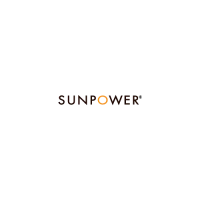SUNPOWER CORPORATION
Safety and Installation Instructions - Document 001-15497 Rev U
©September 2020 SunPower Corporation. All rights reserved. Specifications included in this manual are subject to change without notice.
Table 1.4: Mounting Zone Load Ratings for Performance Modules
(Pending IEC Certification)
Applicable
Products
Mounting
Zone
Distance
from
corner
(mm)
Wind (up &
down) /
Snow(down)
(units in Pa)
3
Mounting
Method
P3 UPP
(2066 x 1160 x
35mm)
A 183-283 1600/2400
Clamp
B 466-566 1600/3600
4
D 783- 833 1600/1600
E 300-400 1600/1600
F 465-565 1600/2400
Frame
Holes
2
303
1600/3600 Bolt
504
603
803
P5 UPP
(2362 x 1092 x
35mm)
C
540-640 1600/3600 Clamp
G
2 Refer to Table 2 for different mounting hole locations
3 Safety Factor 1.5 included
4 IEC validated
5.3 Bifacial Gain
Various environmental and installation parameters affect bifacial
gain. Albedo is a measure of the amount of light reflected from the
ground surface. A higher albedo factor will increase irradiance on the
backside and result in higher bifacial gain of the module. The surface
conditions, month of the year, time of day, GHI and DNI both influence
the amount of incident rearside irradiance.
SunPower recommends to check with solar module mounting
hardware supplier in order to determine the Structure Shading factor
of your particular installation. The Structure Shading Factor varies
with racking system design, irradiance, albedo and height of module
installation above ground and has an overall impact on the rear side
irradiance mismatch.
The Rearside mismatch losses are proportional to the albedo, height
of the modules above ground and structure shading factor. The
irradiance non-uniformity on the rearside results in mismatch
generally as the albedo increases and installation height of the
modules are lower to the ground
5.4 Bifacial Electrical Considerations
The overall electrical bifacial gain is determined by the combination
of albedo, irradiance, shading losses from the rearside, rearside
mismatch and height of installation above ground. Please refer to
the SunPower datasheet for the electrical outputs with respect to
the overall bifacial gain. Please utilise a suitable performance
software package to simulate the overall bifacial gain.
5.5 Handling of Modules during Installation
Do not place modules face forward in direct contact with abrasive
surfaces like roofs, driveways, wooden pallets, railings, stucco walls,
etc…
The module front surface glass is sensitive to oils and abrasive
surfaces, which may lead to scratches and irregular soiling.
During storage, modules need to be protected from rain or any kinds
of liquids. Required storage temperature is between 10°C to 40°C in a
dry environment (humidity between 30 to 80%). Do not store modules
outdoor to avoid moisture and wet conditions.
Modules that feature antireflective coated glass are prone to visible
finger print marks if touched on the front glass surface. SunPower
recommends handing modules with anti-reflective glass with gloves
(no leather gloves) or limiting touching of the front surface. Any finger
print marks resulting from installation will naturally disappear over
time or can be reduced by following the washing guidelines in Section
6.0 below. Any module coverage (colored plastic tarps or similar)
during installation can lead to permanent front glass discoloration and
is not recommended. The use of vacuum lifting pads can cause
permanent marks on the front glass. Never lift or move the module
using the cables or the junction box under any-circumstances.
Shading incidence need to be avoided during PV system operation.
The system is not supposed to be energized until the mounting
scaffolding, fences or railing have been removed from the roof.
Systems should be disconnected in any cases of maintenance which
can cause shading (e.g. chimney sweeping, any roof maintenance,
antenna/dish installations, etc).
6.0 Maintenance
SunPower recommends visual inspection on a regular basis of all
modules for safe electrical connections, sound mechanical
connection, and freedom from corrosion. This visual inspection should
be performed by trained personnel. The standard frequency is once a
year according to environmental conditions Periodic cleaning of
modules is recommended but is not required. Periodic cleaning has
resulted in improved performance levels, especially in regions with
low levels of annual precipitation (less than 46,3cm (18,25 inches)).
Consult your dealer or supplier about recommended cleaning
schedules for your area.
To clean a module, wash with potable, non-heated, water. Normal
water pressure is more than adequate, but pressurized water up to
100 bar (min.50 cm distance) may be used. SunPower recommends
using a large hosepipe and not to perform cleaning at high outside
temperatures. Fingerprints, stains, or accumulations of dirt on the
front surface may be removed as follows: first rinse off area and let
soak for a short period of time (5 mins). Re-wet and use a soft sponge
or seamless cloth to wipe glass surface in a circular motion.
Fingerprints typically can be removed with a soft cloth or sponge and
water after wetting. Do not use harsh cleaning materials such as
scouring powder, steel wool, scrapers, blades, or other sharp
instruments to clean the glass surface of the module. Use of such
materials or cleaning without consultation will invalidate the product
warranty. As dry cleaning is also risky for Anti-Reflective (AR) coated
module surface, spinning brush is not recommended for module
cleaning.

